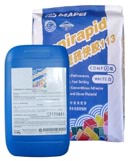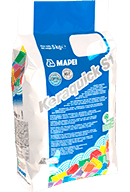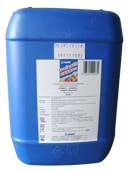The phenomenon behind buckled tiles
So what happens before tiles buckle? The tiles are compressed one against the other which, in turn, creates tension at the interface between the tile and the tile bed. The separation of the tile from the tile bed begins and the tiles begin to progressively lose its bond to the tile bed while resisting the compressive stresses. A situation of instability is gradually reached and the tensions are transformed to the tiles which causes buckling.
Let’s take a look at the reasons that cause this phenomenon and the measures to undertake to prevent it:
1. Expansion or shrinkage
When floors are exposed to drastic temperature or humidity changes, the floor may swell or shrink faster than the tile. Shrinkage can also occur due to the natural compacting of concrete as it cures or due to the building load as it ages.
Prevention: Incorporate expansion joints (a.k.a. movement joints) around the perimeter of the tiled surface as well as within the surface at appropriate intervals for large floor area. Expansion joints should be inserted where tiling abuts restraining surfaces such as perimeter walls, columns, curbs, steps fixed to the base. Expansion joints are recommended in all areas where conditions that may generate stresses are likely to be extreme, for example, large rapid temperature changes.
2. Screed not properly cured
When concrete or cement/sand screed is not properly cured, it is still in a phase of major shrinkage and drying shrinkage cracks can occur after tiling.
Prevention: Allow sufficient curing.




